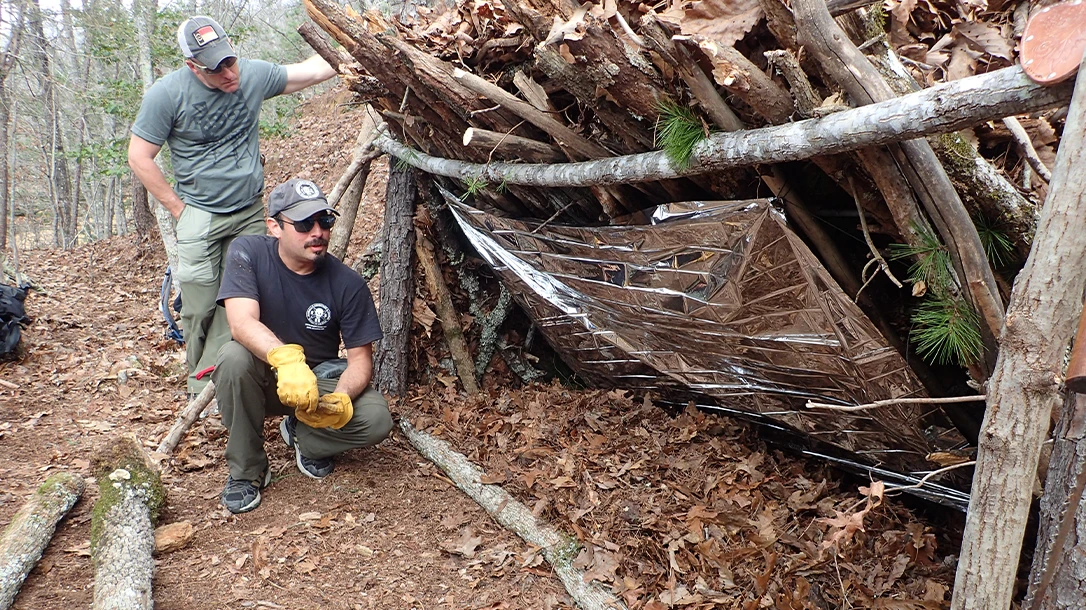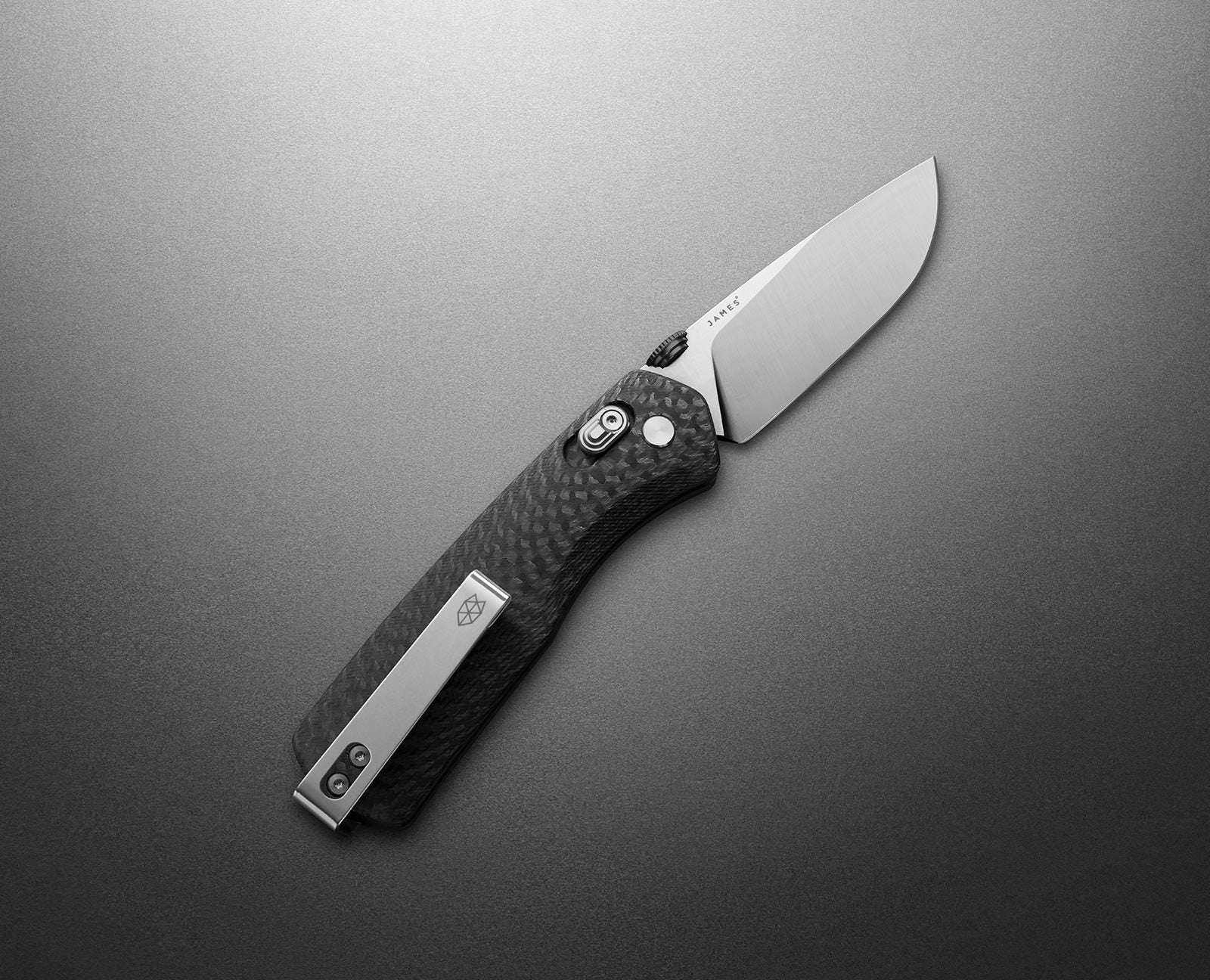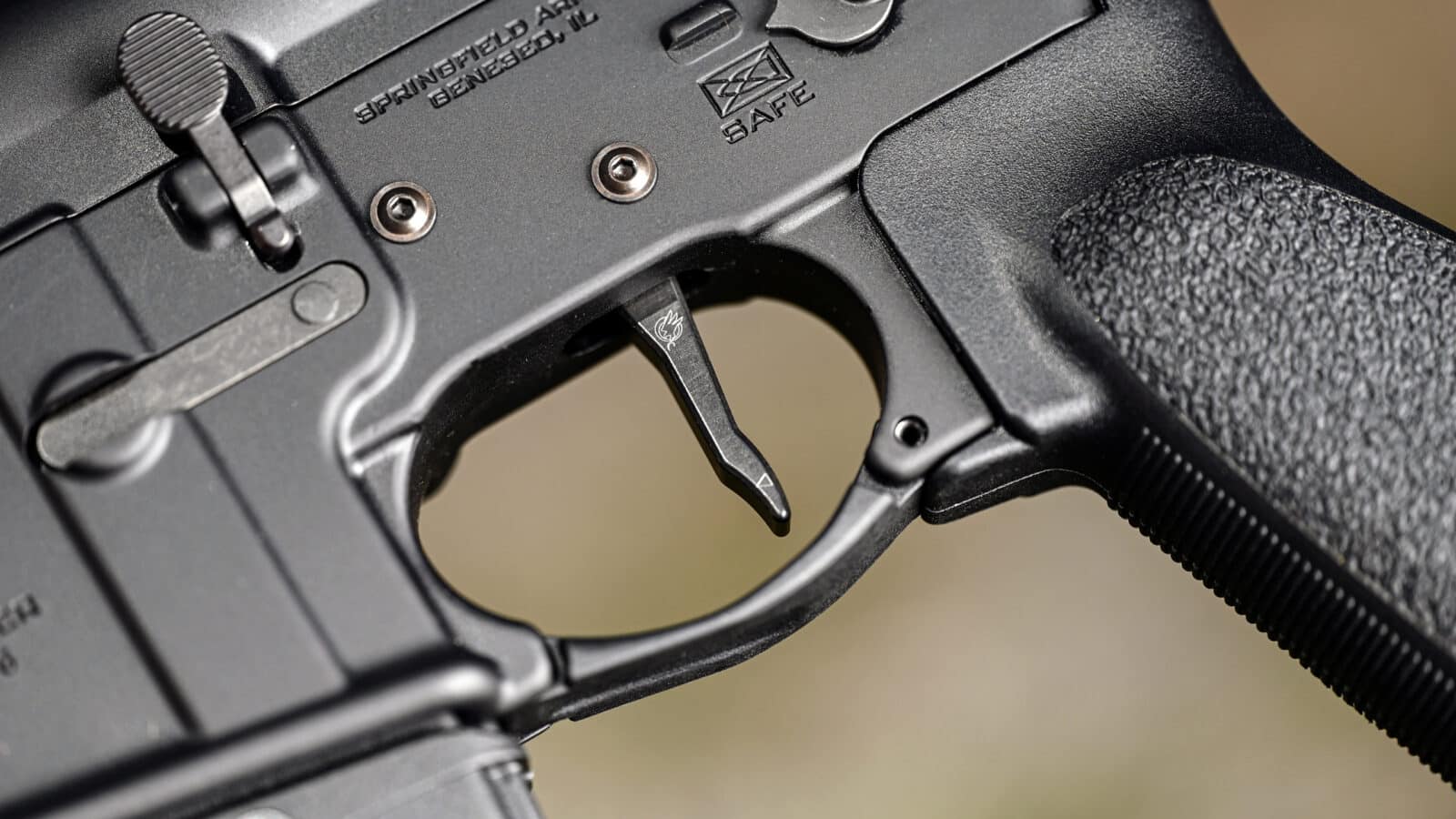How to Stay Safe With these Emergency Shelters

Most survival experts would agree that shelter is first on the survival priority list—I do. Here are four easy-to-setup and make shelters requiring only 46 chromosomes!
Pocket Carry Emergency Shelters
These two manufactured shelters stand out to me as shelters you can stash in a pocket suitable for hunters, hikers, Search and Rescue personnel, or folks out shooting for the day who may end up needing emergency shelters during an unexpected night out.

T6ZERO
Can you tie a shoelace? If so, check out the T6ZERO shelter by Coalcracker Bushcraft. This tarp can very well be your go-to solution for quick and reliable shelter in about one minute—hence the 6 Zero!
This packable, reusable, lightweight shelter system is engineered to protect you from the harshest elements without any prep work. Pull it out of the built-in pouch and tie it to two trees using a shoelace knot. The convenient tie-out loops make staking out the rear easy, and your shelter is ready. It’s that simple!
Made with solid xenon fabric, this emergency survival tarp measures 7 feet long by 5.5 feet wide when set up, weighs only 6 ounces, and has a built-in storage bag.
I’ve used the T6ZERO as my regular backpacking tarp since 2021, and I get around. It’s been used in the snow, wind, and tropical downpours in the jungle. I mostly use it in a lean-to configuration, tying it off to trees. However, I pitch it low when the mercury drops in a flying diamond (plow point) configuration.
Whether you’re a minimalist camper or need a reliable emergency shelter, the T6ZERO is the perfect addition to your outdoor gear. Don’t leave home without it! MSRP: $75
T6ZERO Shelter
www.coalcrackerbushcraft.com

Heat Reflective Poncho
This poncho from SOL (Survive Outdoors Longer) is quite possibly the easiest, no-brainer ‘shelter now’ piece of gear available. Remove it from your pocket or pack, and be reassured that you’re halfway there. Pull it over you and your gear, and then you’re done.
This innovative poncho is constructed with 90% heat-reflective material, making it waterproof, windproof, and highly tear-resistant. Weighing just 2.7 ounces, it’s incredibly lightweight, making it an ideal addition to your emergency shelters collection or your camping or hiking gear. Its spacious design provides ample coverage for your pack and maybe a small dog.
To make the Heat Reflective Poncho more effective, use it in conjunction with an open fire. Naturally, stay far enough away not to shrinkwrap yourself, yet close enough to trap warm air.

Stay cozy, dry, and easily visible with this exceptional poncho!
MSRP: $8.99
SOL Heat Reflective Poncho
www.surviveoutdoorslonger.com

Debris Hut
A debris hut, the rustic cousin of the modern tent, is a survivalist’s snug haven. It’s like a squirrel’s nest on a grand scale, using leaves and forest debris to provide insulation fit for a woodland king. It’s nature’s recycling project, turning fallen leaves and wayward branches into emergency shelters repurposed into a humble abode.
You can handle most of the construction using your hands and a sturdy pair of gloves for protection against splinters and thorns. For those who like to keep it light, the Swiss Army Knife (SAK) is a must-have tool with its excellent wood saw, perfect for cutting tree boughs when building a debris hut.
Lash a ridge pole to a tree that is about as long as your height, plus one more arm length, about waist level high. Using dead sticks, create the ribs by leaning them against the ridgepole until it looks like a dinosaur skeleton. Gather and apply several armloads of dry pine needles on top of the shelter using whatever you have available. It should look like a dome and have no pieces of wood sticking out, which will only channel water back inside the shelter. Finally, a mound of pine needles must be put inside to create the bedding, which is very important. In survival classes, this is where most students go wrong and ultimately have a long, cold night!
Stack insulating materials at the entrance, which can be pulled into the shelter to seal the entryway. If available, a backpack can serve this purpose. To secure the insulation from being scattered by strong winds, overlay the debris with a layer of bark shingles or branches.
So, if you ever find yourself playing castaway in the great outdoors, remember the debris hut as one of the simplest emergency shelters.

Lean-T
A basic wilderness lean-to is a simple yet effective structure for outdoor shelter. Select a stout ridgepole that can handle weight to build a classic lean-to shelter. Lash it in place at shoulder height using reliable cordage or solid forked sticks. Then, layer it by closely leaning wrist-thick poles on the forest floor or freshly cut. They should all be at about a 45-degree angle. If you have a small folding saw, it can make the process easier, but improvising is also commendable. Perhaps using two trees or a forked tree to lever poles and break them to size.
Once the first layer of thick poles is in place, smaller sticks are laid at different angles to catch the thatching using pine straw. You can use a garbage bag to fill and dump debris over the top for insulation and tie it off to become the mattress. Since the lean-to shelter is designed to work with an open fire in front, it’s essential to clear all debris from the front of the shelter and mark where the fire will be located one whole step from the shelter. However, the fire is best kept for a future article!
Wrap Up
Having the right gear can make all the difference in emergency shelters. Whether it’s the T6ZERO, or an improvised option, being prepared for the unexpected elements can be a lifesaver. Remember, the key to survival is adaptability and resourcefulness, so equip yourself with the knowledge and tools to weather any storm. Master the basic skills, as they always come back to us in dire straits!







